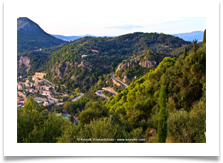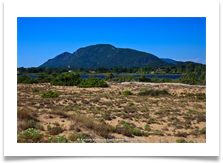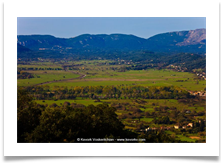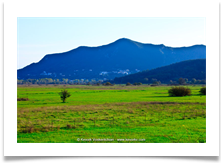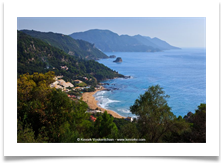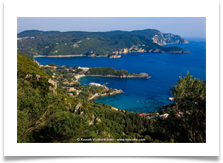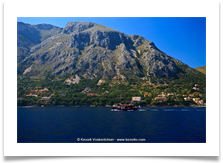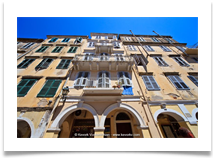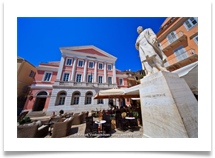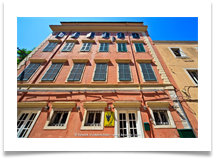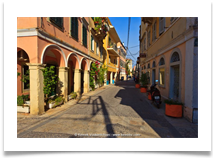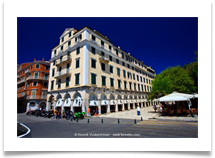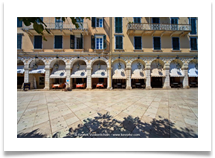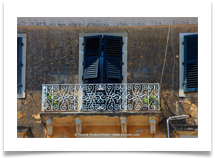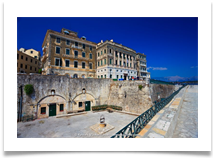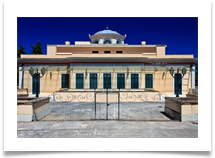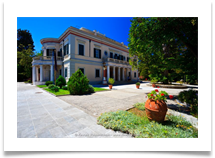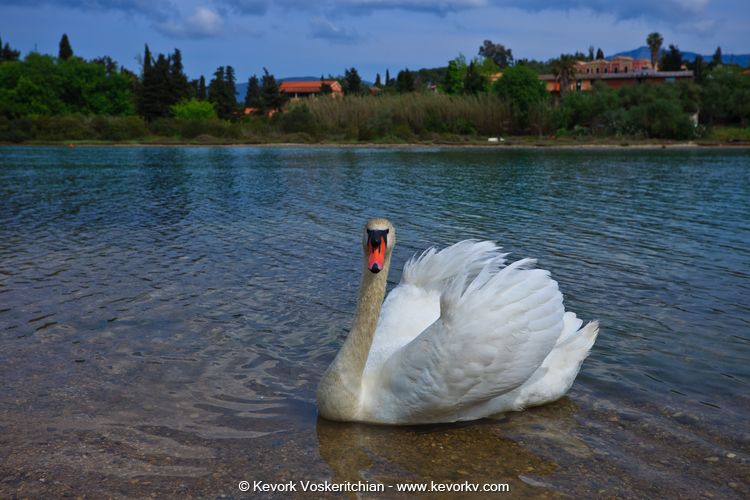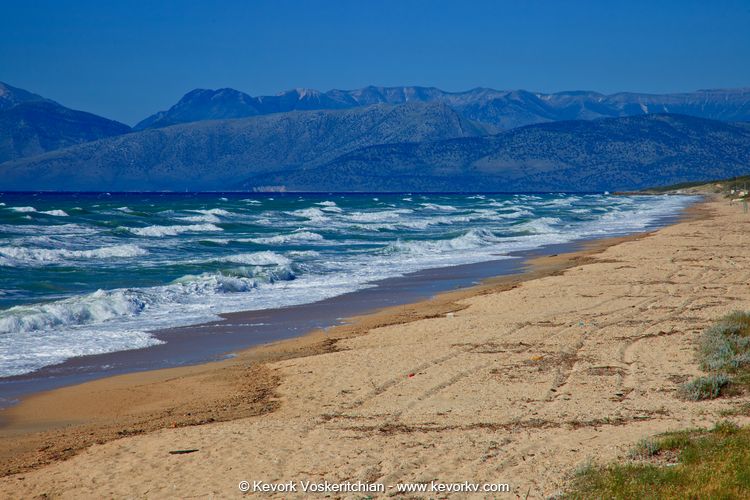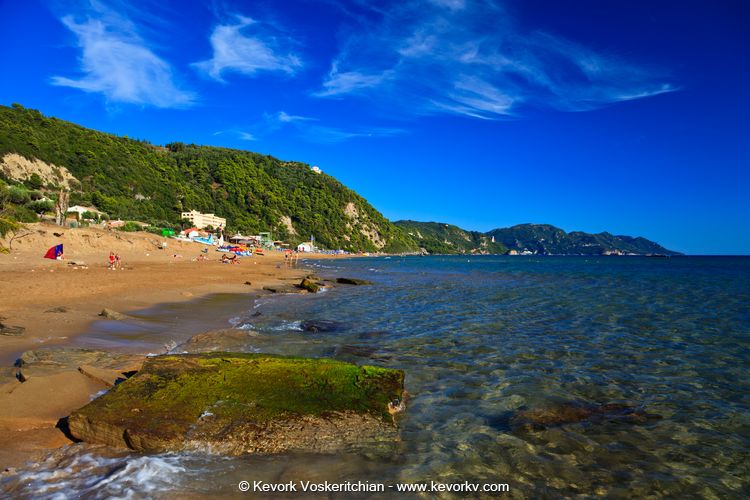




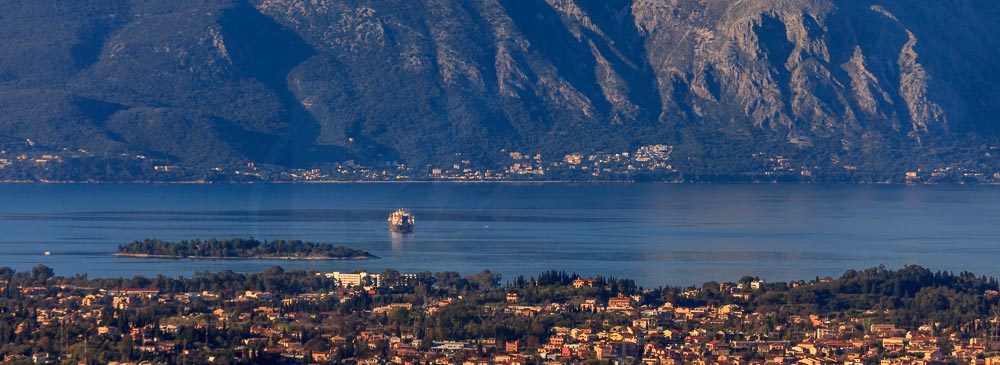


© 2016 All CopyRights Reserved
All content is copyrighted, no part my be copied, or used, for any reason, without the prior written agreement.
Any and all copyright violation will be legally prosecuted.
Its 640 sq. Km are characterized by two high and well-defined ranges dividing the island into three districts, of which the northern is mountainous, the central undulating, and the southern low-lying. Visually the island can be described as a mountainous green island with an endless undulating coastline with a large number of beaches scattered all along its length.
Geologically it is also very interesting as the morphology of the land changes dramatically between North and South with the two mountains adding their own variations to the land. Not to be overlooked are the many caves both below and above the water which attract many visitors every year just for their beauty and mystery.
Three natural lagoons stand out as significant wetland which attract a large number of migrating birds during the winter and nurture a great many fish. There are no significant fresh water lakes and the four rivers of Potamos, Sidari, Messonghi and Lefkimi flow only during the winter months. Despite the lack of any reservoirs there is no shortage of fresh water thanks to the plentiful rains.
Corfu is the northern most point of Greece which also makes it the only island which is covered almost entirely with vegetation throughout the year ranging from flat grasslands to thick, almost tropical forests, in contrast to the majority of the islands which are mostly rocky and barren having very little if any permanent vegetation.
Geologically it is also very interesting as the morphology of the land changes dramatically between North and South with the two mountains adding their own variations to the land. Not to be overlooked are the many caves both below and above the water which attract many visitors every year just for their beauty and mystery.
Three natural lagoons stand out as significant wetland which attract a large number of migrating birds during the winter and nurture a great many fish. There are no significant fresh water lakes and the four rivers of Potamos, Sidari, Messonghi and Lefkimi flow only during the winter months. Despite the lack of any reservoirs there is no shortage of fresh water thanks to the plentiful rains.
Corfu is the northern most point of Greece which also makes it the only island which is covered almost entirely with vegetation throughout the year ranging from flat grasslands to thick, almost tropical forests, in contrast to the majority of the islands which are mostly rocky and barren having very little if any permanent vegetation.
A crossroad of many civilization for thousands of years the architecture of Corfu is a blend of Sicilians, Venetians, French and British influences creating an interesting and beautiful amalgam of different architectural styles.
The old city built by the Venetians is the only one in Greece to be surrounded by two fortresses earning it the name Kastropolis, city of castles, evidence of its turbulent history and many invaders not only because it was such a desirable place to live, but being the first port of call between Rome and Greece it was indispensible as a port for repairs and supplies, the Venetian shipyard in Gouvia standing as proof until today.
Walking through the narrow streets of the old city it is easy to forget you are in Greece and might be tempted to talk Italian to the locals, since very little has been changed since it was built in the 16th century.
During the Byzantine era the city gradually expanded and became powerful and fortified with fortresses and castles like the Angelo Castro, the Gardiki Castle and the Fortress of Saint Mark.
The French and then the British followed the Venetian domination. The entire town was reorganized and most of what we see today dates back to that period 16th- 19th century).
French and English built magnificent monuments such as the Esplanade Square, the Liston building, the Palace of Saint Michael and Saint Georges, the palace of Mon Repos and many other fine architectural marvels.
The old city built by the Venetians is the only one in Greece to be surrounded by two fortresses earning it the name Kastropolis, city of castles, evidence of its turbulent history and many invaders not only because it was such a desirable place to live, but being the first port of call between Rome and Greece it was indispensible as a port for repairs and supplies, the Venetian shipyard in Gouvia standing as proof until today.
Walking through the narrow streets of the old city it is easy to forget you are in Greece and might be tempted to talk Italian to the locals, since very little has been changed since it was built in the 16th century.
During the Byzantine era the city gradually expanded and became powerful and fortified with fortresses and castles like the Angelo Castro, the Gardiki Castle and the Fortress of Saint Mark.
The French and then the British followed the Venetian domination. The entire town was reorganized and most of what we see today dates back to that period 16th- 19th century).
French and English built magnificent monuments such as the Esplanade Square, the Liston building, the Palace of Saint Michael and Saint Georges, the palace of Mon Repos and many other fine architectural marvels.

The majority of the population is gathered around the capital, one of the oldest cities in the World, surrounded by two castles built by the Venetians, now a UNESCO World Heritage site. Being the only real town of the island, it hosts the main port, airport, administration, business and cultural centre of the island. The town is large enough to remain busy even during the winter months, but come spring, the pace begins to pick up as visitors, mostly from mainland Greece, come for the Easter celebrations, reaching a climax during July and August when the population of the island almost triples, as tourist from all over the World flood the island.
The once quiet villages around the coastline have become busy summer resorts thanks to their breath-taking beaches and pristine waters. A few of the inland villages do offer some alternative tourism, but most of them continue a modest pursuit in agriculture, primarily with olives and a little farming. During the summer months, the majority of the population tends to be occupied by their nearest tourist resort, where the demand for labor triples and return back to a slower pace after October. This is a great shame because Corfu has all the prerequisites of producing the finest organic products, with its un-spoilt and fertile land, plentiful rains and moderate climate.
Thankfully fishing is still very much alive, with the three natural lagoons producing the bulk of the smaller fish that is served on the island and fishing boats going after the larger more desirable fish, which is not only very tasty, but far less polluted than most parts of the World thanks to the lack of heavy industries and oil rigs.
This island is so blessed by nature, that it has been the target of conquerors for the past 2000 years or more, for its abundance of food, water, timber and strategic geographic location. Today the island is invaded by a million or so visitors every year for its beaches, mild Summer weather and safe, relaxed atmosphere.
The island of Corfu is not only one of the best places to relax under the Sun, for some, it is also, one of the best places in the World to live in.
The once quiet villages around the coastline have become busy summer resorts thanks to their breath-taking beaches and pristine waters. A few of the inland villages do offer some alternative tourism, but most of them continue a modest pursuit in agriculture, primarily with olives and a little farming. During the summer months, the majority of the population tends to be occupied by their nearest tourist resort, where the demand for labor triples and return back to a slower pace after October. This is a great shame because Corfu has all the prerequisites of producing the finest organic products, with its un-spoilt and fertile land, plentiful rains and moderate climate.
Thankfully fishing is still very much alive, with the three natural lagoons producing the bulk of the smaller fish that is served on the island and fishing boats going after the larger more desirable fish, which is not only very tasty, but far less polluted than most parts of the World thanks to the lack of heavy industries and oil rigs.
This island is so blessed by nature, that it has been the target of conquerors for the past 2000 years or more, for its abundance of food, water, timber and strategic geographic location. Today the island is invaded by a million or so visitors every year for its beaches, mild Summer weather and safe, relaxed atmosphere.
The island of Corfu is not only one of the best places to relax under the Sun, for some, it is also, one of the best places in the World to live in.
Some amazing, true facts about Corfu
> The island was inhabited at least from 1300 BC.
> The first naval battle in Greece took place in Corfu 665BC.
> It is the only part of Greece never conquered by the Turks.
> Considered a bastion of Western Civilization against the Ottoman tide.
> The first academy of Greece (Ionian), was established in 1732 in Corfu.
> The Ionian Academy become the first university on Greece.
> San Giacomo (town hall) was the first theater and opera of modern Greece.
> There are 19 marching wind bands in Corfu.
> One in four Corfiots are musically trained.
> Ioannis Kapodistrias was the first elected head of state in 1827.
> There are 37 Greek Churches in the town of Corfu.
> The island has 3-4 million olive trees.
> There are over 6000 spices of wildflowers of which are 55 wild and rare orchids.
> There are 115 (and still counting) beaches.
> In Europe kumquats grow only in Sicily and Corfu.
> The oldest tennis club in Greece was established in Corfu by the English in 1896.
> The island was inhabited at least from 1300 BC.
> The first naval battle in Greece took place in Corfu 665BC.
> It is the only part of Greece never conquered by the Turks.
> Considered a bastion of Western Civilization against the Ottoman tide.
> The first academy of Greece (Ionian), was established in 1732 in Corfu.
> The Ionian Academy become the first university on Greece.
> San Giacomo (town hall) was the first theater and opera of modern Greece.
> There are 19 marching wind bands in Corfu.
> One in four Corfiots are musically trained.
> Ioannis Kapodistrias was the first elected head of state in 1827.
> There are 37 Greek Churches in the town of Corfu.
> The island has 3-4 million olive trees.
> There are over 6000 spices of wildflowers of which are 55 wild and rare orchids.
> There are 115 (and still counting) beaches.
> In Europe kumquats grow only in Sicily and Corfu.
> The oldest tennis club in Greece was established in Corfu by the English in 1896.


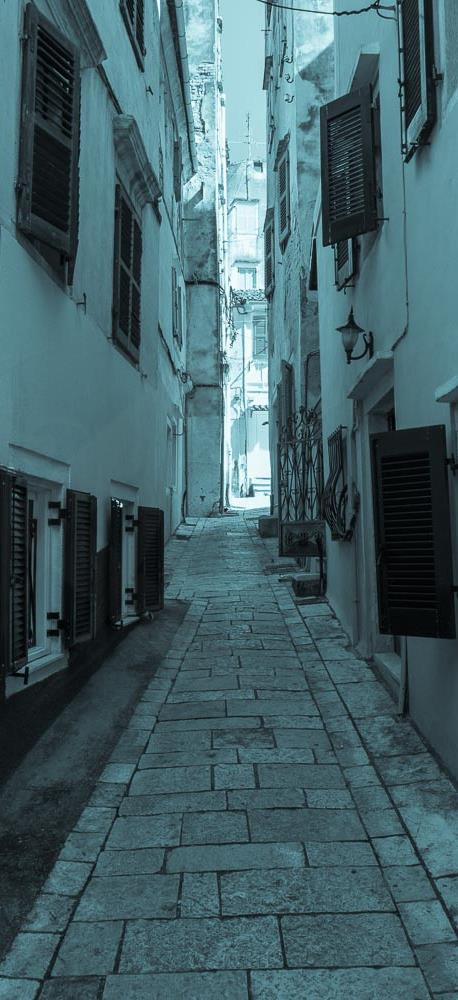



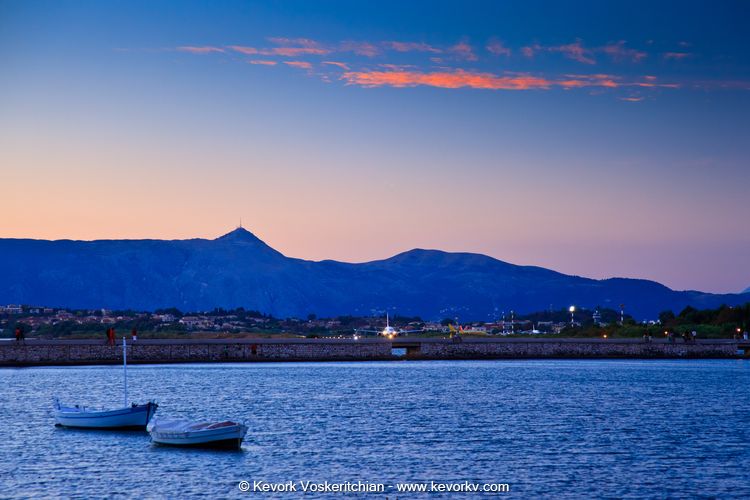

Throughout its history, it was desired for its geographical location, abundant wood, food and water, making the island a vital port between Greece and Italy.
Today the island is invaded by hundreds of thousands of visitors every year for the very same reasons, but with very different intentions. Life is just so very pleasant and the environment so clean (at least compared to modern cities), that it makes this island one of the very best places in the World for one who wishes to escape from the madness of the fast moving world and combine relaxation with entertainment.

